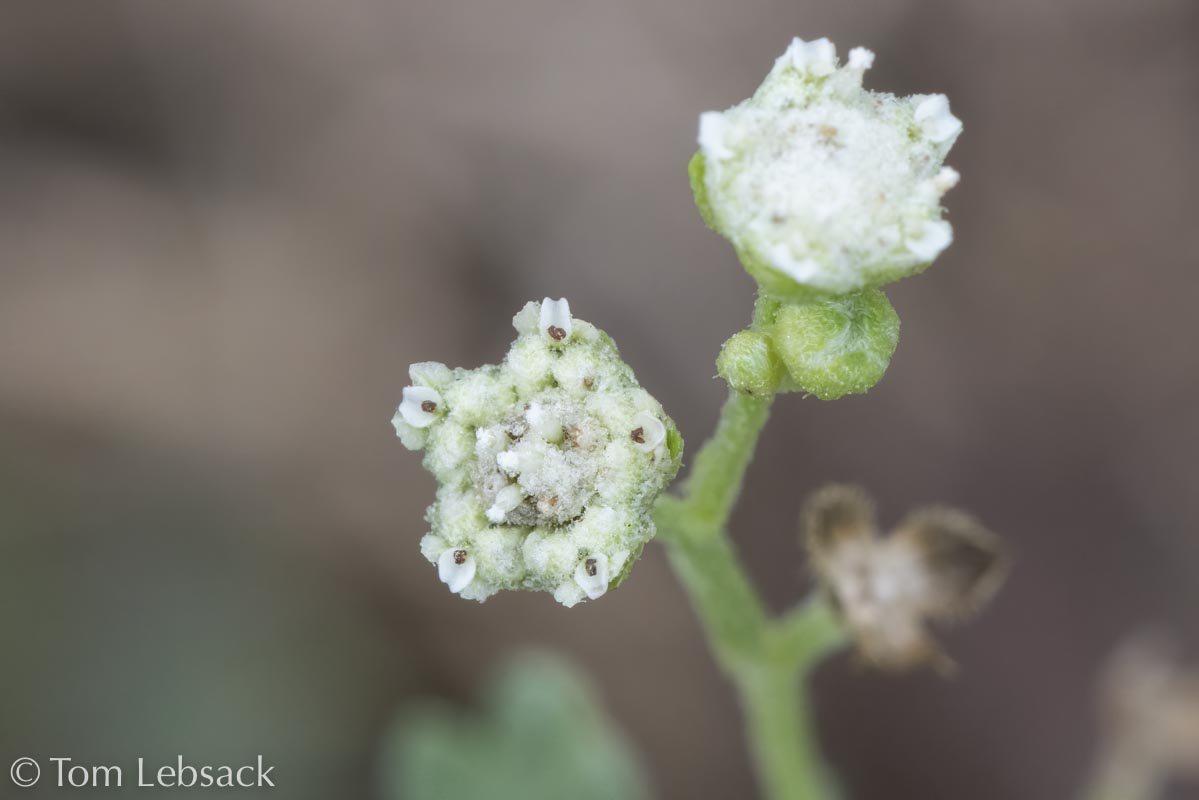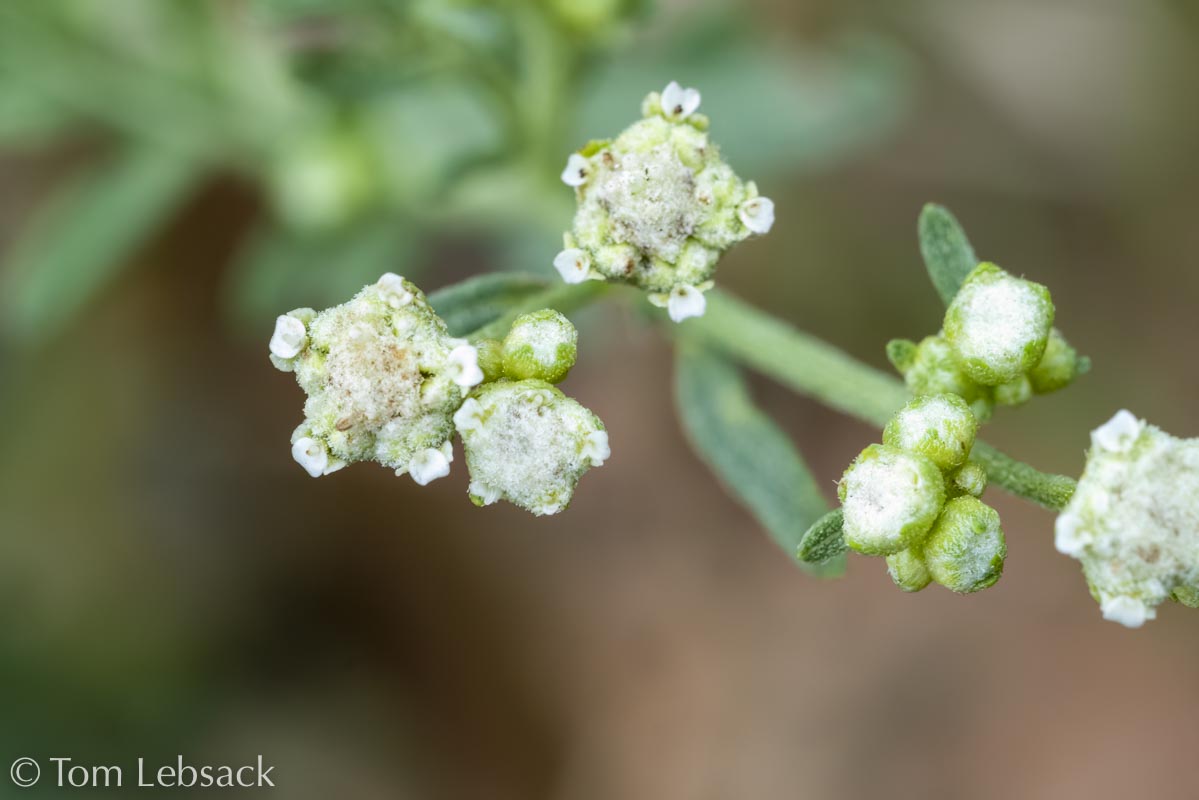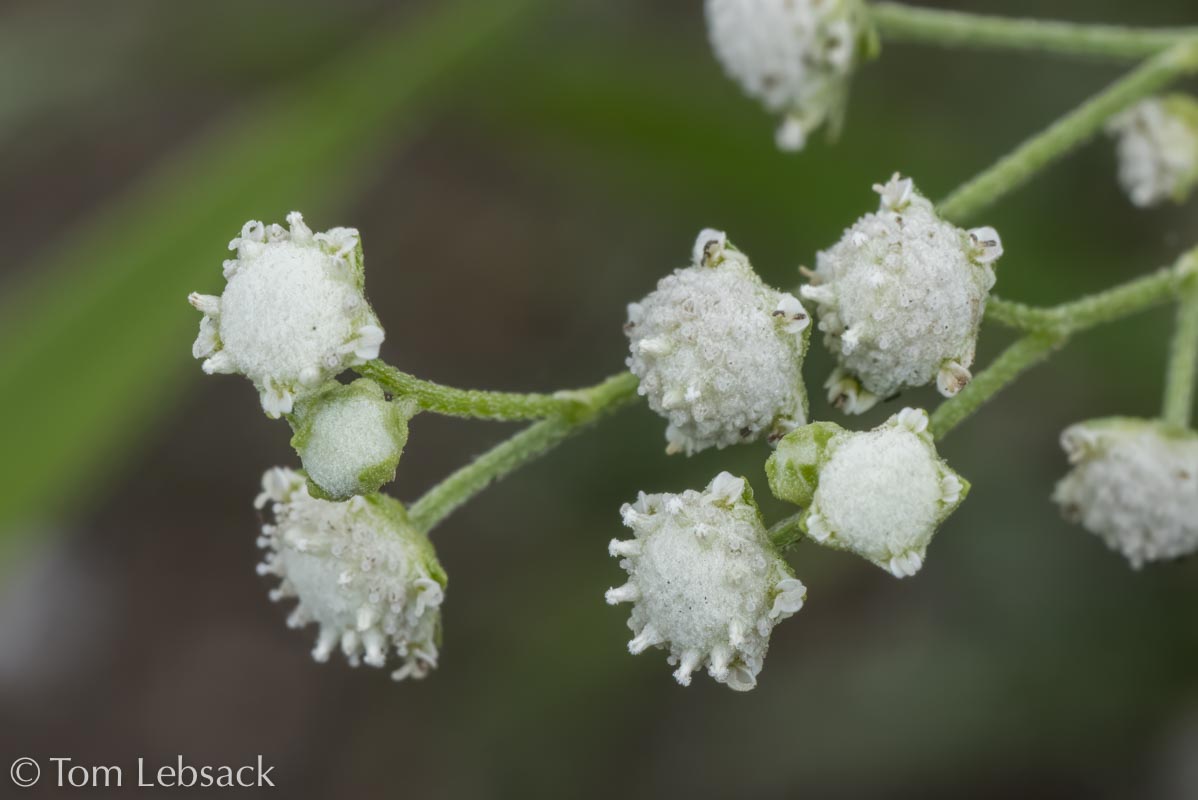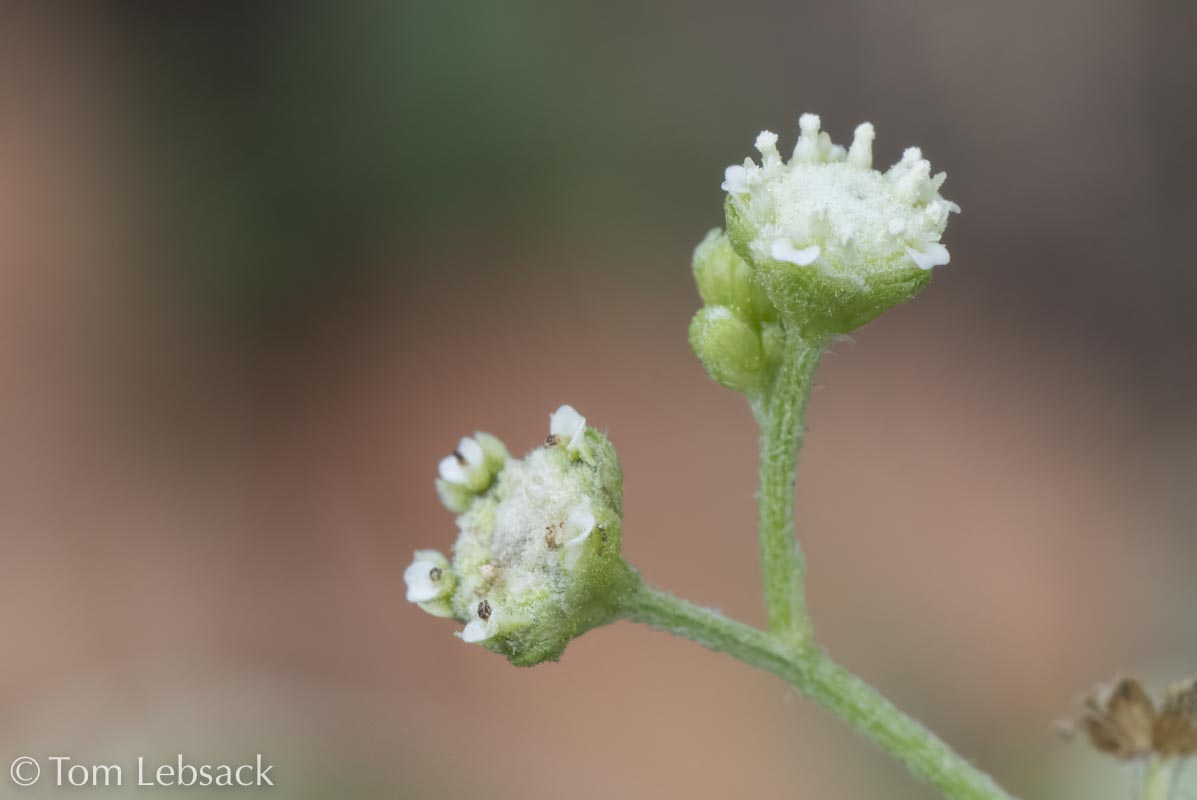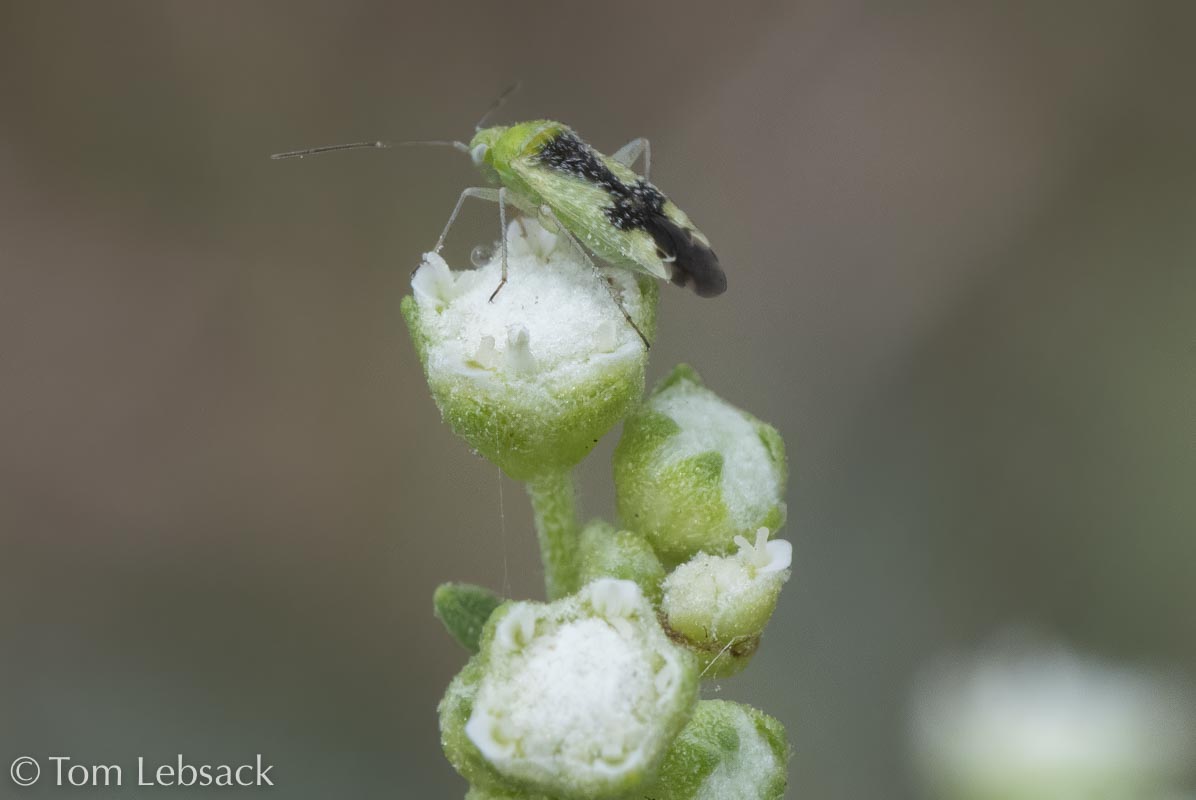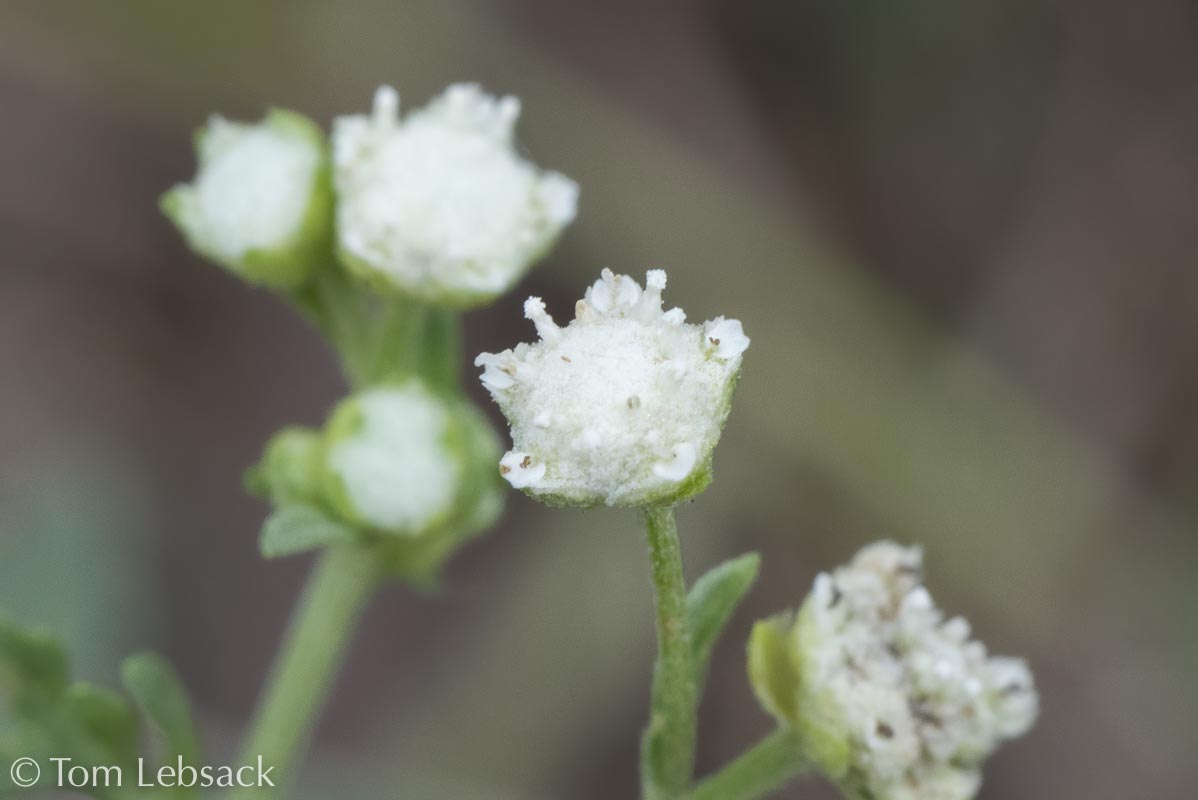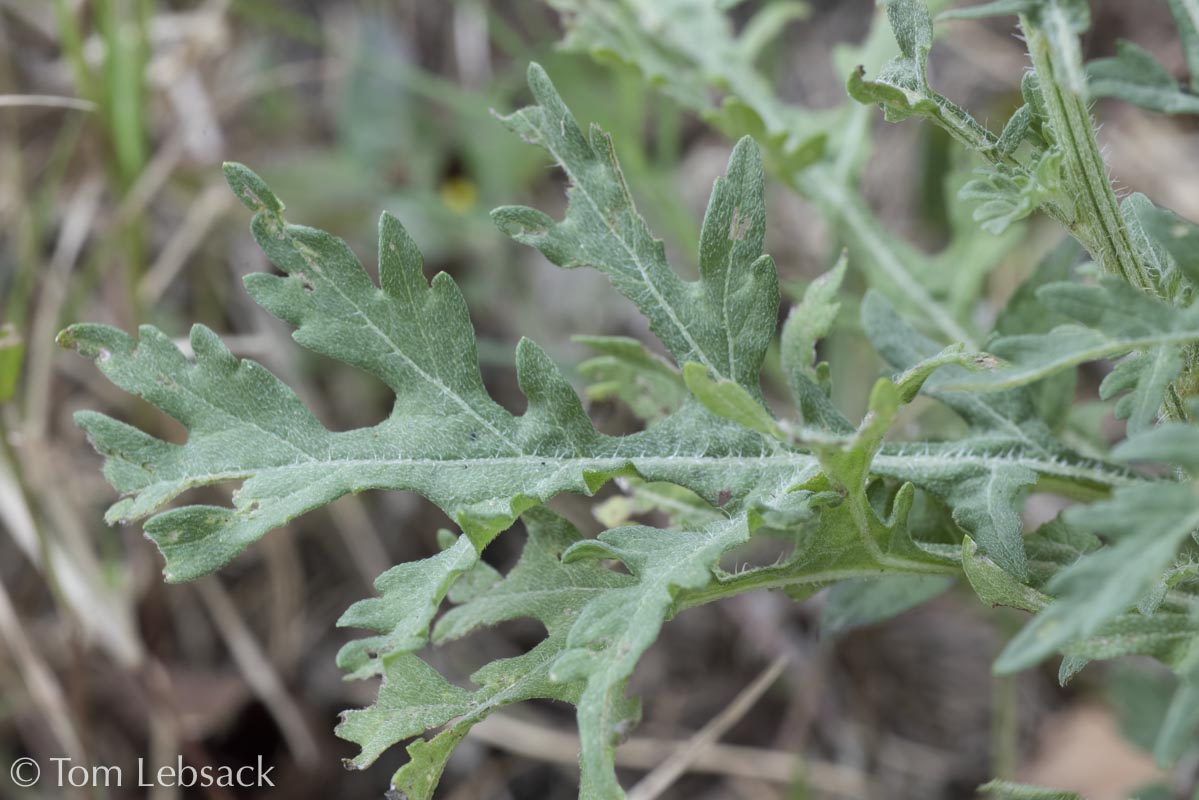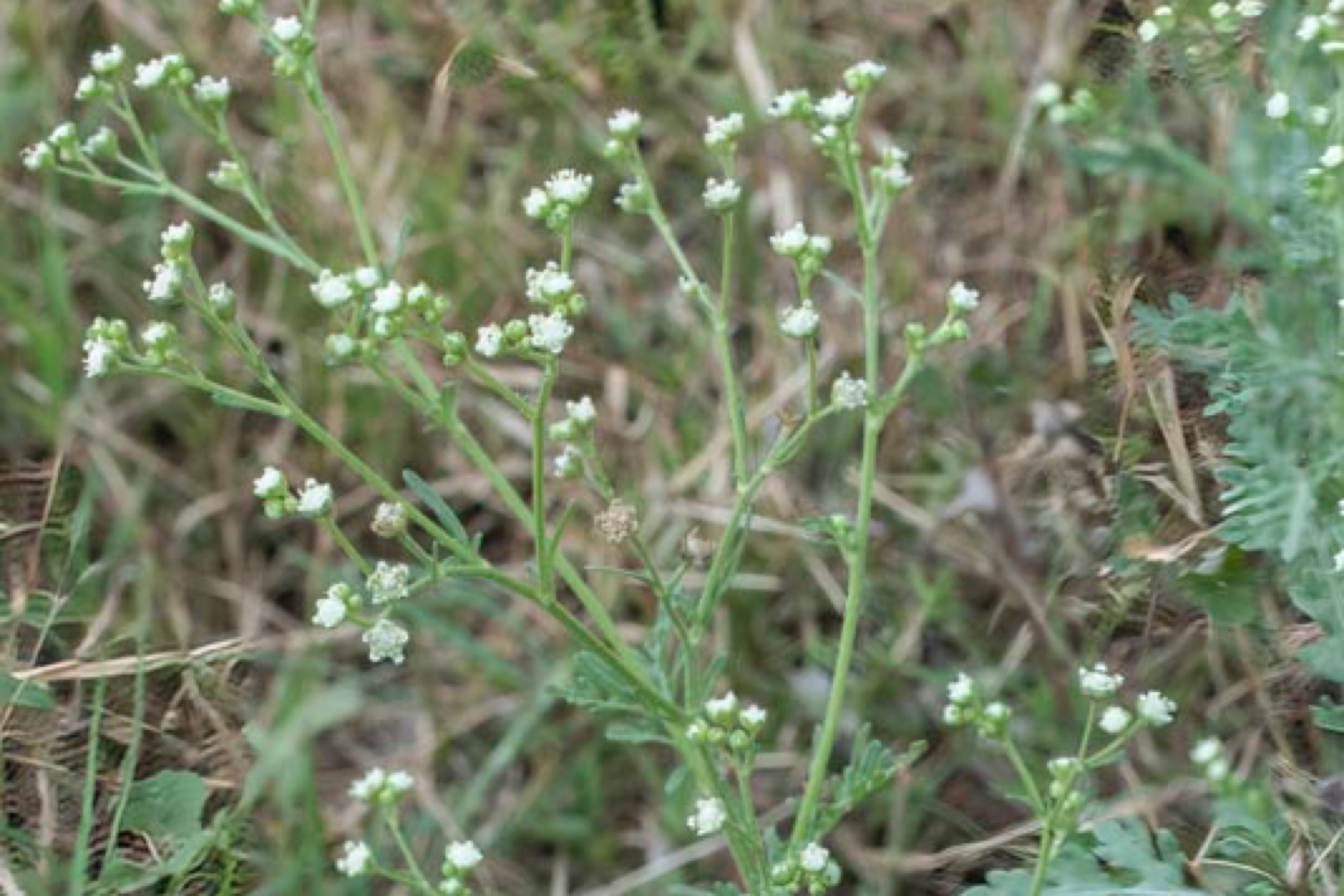Texas Wildbuds
Parthenium hysterophorus
(Santa Maria Feverfew)
| Scientific Name | Parthenium hysterophorus | USDA PLANTS Symbol | PAHY |
| Common Name | Santa Maria Feverfew, False Ragweed | ITIS Taxonomic Serial No. | 38164 |
| Family | Asteraceae (Sunflower) | SEINet Reference |
Click Here |
| Description | Habitat: Various soils and habitats, disturbed areas; widespread. Plant: Erect stout annual 12 to 40 inches tall, usually much branched in upper portion; stems with conspicuous grooves and with stiff hairs. Leaves: Alternate, lower leaves deeply once or twice pinnately-lobed, 4 to 8 inches long overall and up to 2 inches wide; on petioles up to 5/8-inch long; upper leaves entire to slightly lobed; leaf surfaces with glandular and non-glandular hairs. Inflorescence: Terminal and axilliary clusters of composite white flower heads, each ~3/16-inch across and with 20 or more disk florets and 5 small pistillate ray florets around the outer edge. Bloom Period: March to November. References: "Wildflowers of Texas" by Geyata Ajilvsgi, Vascular Plants of Williamson County by A.C. Gibson, SEINet and Wikipedia. Note: While not considered invasive in Texas, on a worldwide basis Wikipedia states "Parthenium hysterophorus invades disturbed land and infests pastures and farmland, causing often disastrous loss of yield, as reflected in common names such as famine weed. In some areas, heavy outbreaks have been ubiquitous, affecting livestock and crop production, and human health....Contact with the plant causes dermatitis and respiratory malfunction in humans, and dermatitis in cattle and domestic animals." |
BONAP Distribution Map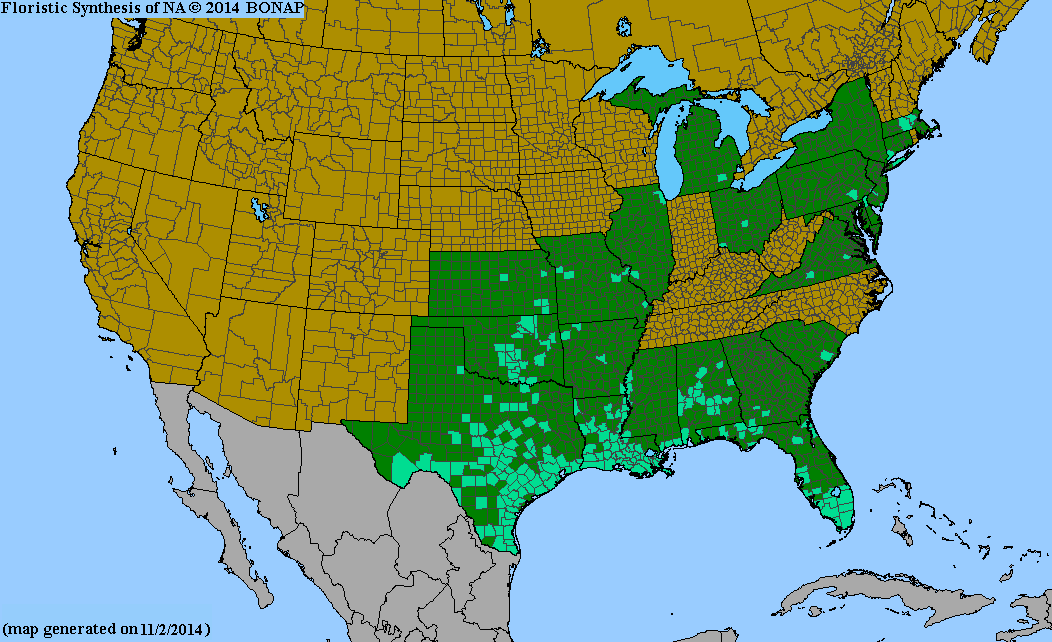 Map Color Key Map Color Key |
Texas Status: Native |
Banner photo of Castilleja indivisa and Lupinus ssp. taken along FM 1323 north of Johnson City, Blanco County
© Tom Lebsack 2025
Every attempt is made to provide accurate, up-to-date, and relevant information, but the completeness or accuracy of any information presented on this website cannot be guaranteed. I use authoritative references to insure high standards of accuracy and review and update the information frequently.
